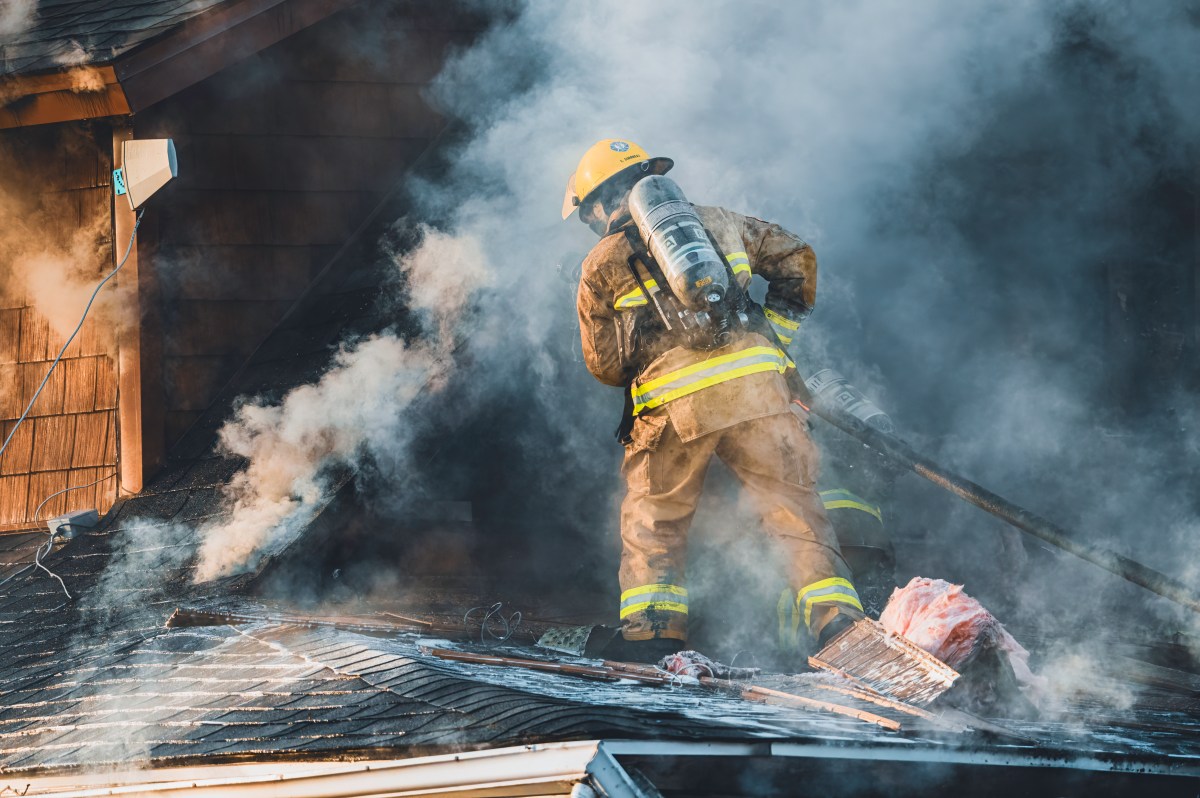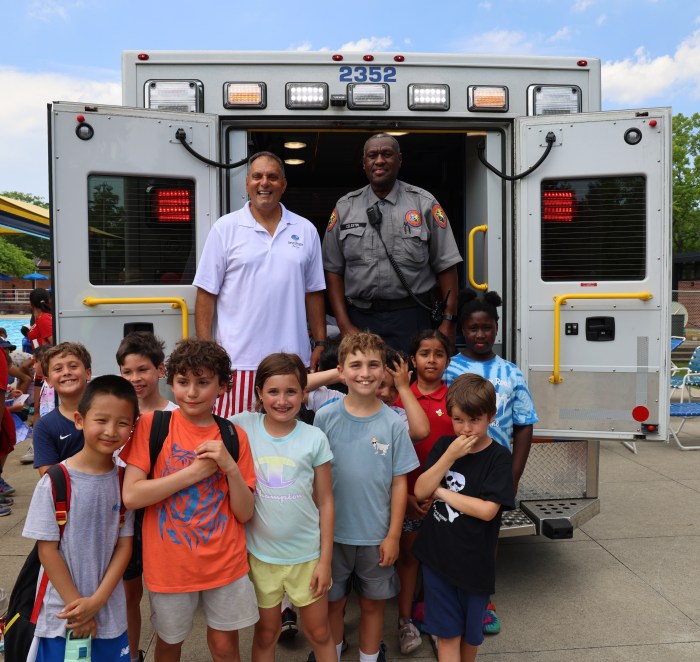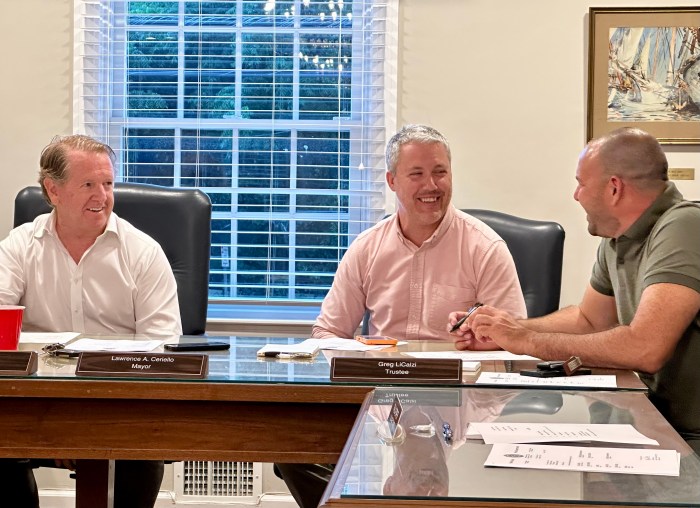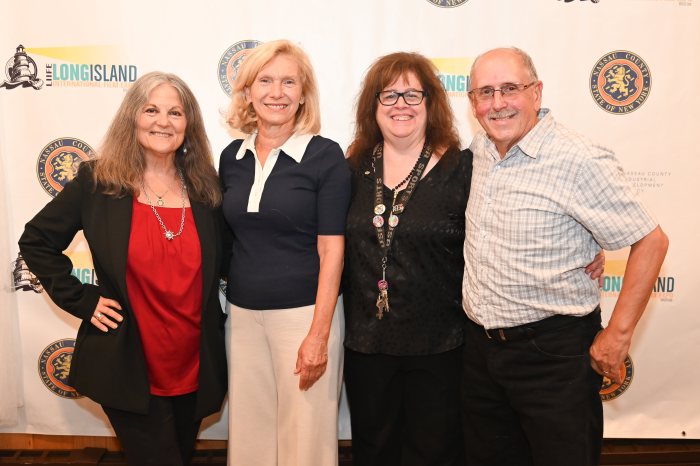As the sirens wail and fire trucks roll down neighborhood streets, the reassuring presence of first responders masks a growing emergency within New York’s firefighting system: Volunteer fire departments, the backbone of fire protection across most of the state, are facing a crisis in recruitment and retention.
Nearly 90% of New York’s fire departments are volunteer-run, and they save taxpayers an estimated $3.8 billion annually in salary and benefits, according to a 2023 study from the Firefighters Association of the State of New York. But the number of individuals willing to serve has been steadily declining for decades.
“In the early 2000s, we had about 120,000 volunteers,” said John D’Alessandro, a firefighter in Saratoga County and FASNY’s association secretary. “Now we’re down to somewhere between 75,000 and 80,000. And at the same time, the number and complexity of calls have gone up.”
Volunteer firefighters are now being called to respond to a growing variety of emergencies, from structure fires and car crashes to hazardous material incidents, technical rescues and natural disasters. The increasing demands are stretching already thin departments another notch.
“The state even uses the volunteer fire service as a sort of rapid deployment force,” D’Alessandro said. “When there’s a snowstorm in Buffalo, departments from the Hudson Valley and the Capital Region go out to help. It’s a statewide support network, but the strain is real.”
Currently, there are 71 fire departments in Nassau County, and 109 fire departments in Suffolk County. But only two of those departments are paid, the City of Glen Cove Fire Department and the City of Long Beach Fire Department. The rest rely on local residents dropping what they’re doing, sometimes in the middle of work, school, or dinner, to respond.
Robert Leonard, media relations leader of FASNY and a firefighter with the Syosset Fire Department on Long Island, said most people don’t know their fire companies are manned by volunteers.
“People assume someone is sitting at the firehouse waiting for the bell to ring,” Leonard said. “But they don’t realize it’s their neighbors, the same people they see at the grocery store or PTA meetings, who are running out at 2 a.m. to help.”
To address the shrinking volunteer pool, FASNY launched its “Is There a Fire in You?” campaign in 2010, after receiving a federal Staffing for Adequate Fire and Emergency Response grant. The campaign, built around a mix of social media, digital outreach, and printed materials, aimed to counter the top three concerns people expressed about joining: lack of time, fear of danger and not knowing how to get started.
The campaign helped raise awareness, but the core obstacles remain. One of the biggest hurdles is the time required to become certified. Volunteers must complete “Firefighter I,” a comprehensive training course that mirrors the curriculum used by professional departments. It typically involves over 130 hours of instruction, two nights a week plus weekends.
To encourage more people to become volunteer firefighters, Gov. Kathy Hochul introduced a stipend program in Nassau County that pays volunteers for completing key state fire training courses, including $750 for basic exterior firefighting operations, $1,250 for interior firefighting operations (Firefighter I), and up to $2,000 for completing a full blended learning track combining both. Additional stipends include $250 for basic wildland fire suppression and $1,000 for fire officer I certification.
“It’s the same training that FDNY recruits go through,” D’Alessandro said. “But unlike career firefighters, our members are juggling full-time jobs and families.”
According to Leonard, “It’s a full-time part-time job. It’s not full-time hours, but you’ve got to give us as much time as you can because people’s emergencies happen 24 hours a day, seven days a week.”
Firefighters are offered a range of benefits from tax exemptions to life insurance policies.
New York offers a $200 state income tax credit for active volunteer firefighters, a benefit that hasn’t increased since it was introduced more than 20 years ago. Two years ago, Hochul also introduced a property tax exemption of up to 10 percent to volunteer firefighters and volunteer ambulance workers, but local governing bodies have to adopt the local law. D’Alessandro argues it does little to move the needle.
“We’re asking people to essentially take on a second job, with life-or-death consequences, and offering a $200 tax break,” D’Alessandro said. “That’s not going to persuade most people.”
In 2022, state lawmakers passed legislation allowing local taxing jurisdictions to offer volunteer firefighters a 10% property tax exemption. While well-intentioned, the policy has limited impact on younger recruits, many of whom don’t yet own homes.
New York also offers tuition reimbursement through the Higher Education Learning Program, which provides up to $1,500 per semester for accredited college coursework in exchange for active fire service. But access to that program depends heavily on local implementation and awareness.
In addition, the Length-of-Service Award Program rewards dedicated volunteers with pension-style benefits, potentially offering up to $800 per month in Nassau, while Suffolk provides similar accrual-based retirement awards. Firehouses typically offer annual physicals, access to mental health and peer support services, and group life insurance or line-of-duty death coverage to protect families.
The shortage creates a dangerous feedback loop: When one department can’t respond to a call, the burden shifts to nearby departments, overloading them in turn. Mutual aid becomes routine rather than exceptional, and members begin to burn out.
“I’ve heard firefighters say, ‘I spent more time at the firehouse than I did at home this week,’” D’Alessandro said. “That kind of strain isn’t sustainable.”
Leonard agrees. “When people can’t keep up with the demands, they leave. And we lose not just a firefighter, we lose experience, leadership and community trust.”
Leonard said switching to all paid fire departments just isn’t feasible.
According to a FASNY study conducted in 2023, an additional 31,058 career firefighters would be necessary to go to an all-paid fire service. The annual cost of an all-career fire service would be $4.7 billion, there would be a one-time cost of $8.2 billion to acquire existing stations/structures, vehicles and equipment and property taxes would rise an average 28.4 percent statewide.
The issue isn’t limited to volunteers. Even paid departments are struggling to attract applicants. Civil service exams that once drew hundreds now attract far fewer, as wages fail to keep pace with inflation and workplace risks continue to mount.
Still, leaders like D’Alessandro and Leonard are determined to keep the system alive. They say the public must better understand the stakes and how they can help.
“This isn’t a volunteer vs. career issue,” D’Alessandro said. “It’s a public safety issue. If we don’t have enough people to respond, everyone’s at risk. We need more hands on the hose or the whole system starts to crack.”
Leonard, who is also an instructor at the Nassau Fire Academy, says he is hopeful after seeing the numbers in new probationary firefighters increase by 20 percent in the last year.
“We’ve been averaging about 600 [firefighters] a year, and we’re shooting for about 720 this year, so we’re seeing more recruits,” said Leonard.
But while there are more recruits, there are also losses due to retirement, college students moving and unfortunately deaths.
“You’ve got to join because you want to serve your community. You’re willing to put yourself out there and put yourself at risk to help your neighbors and get a sense of satisfaction,” said Leonard. “And that paycheck can’t be matched, the sense of satisfaction you get from helping your neighbors.”


































